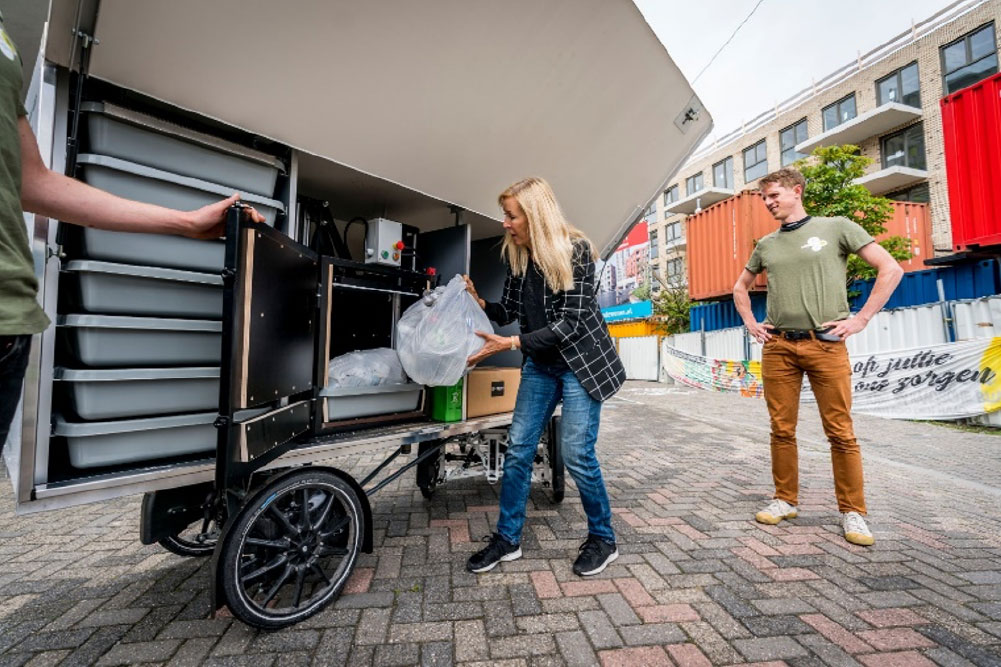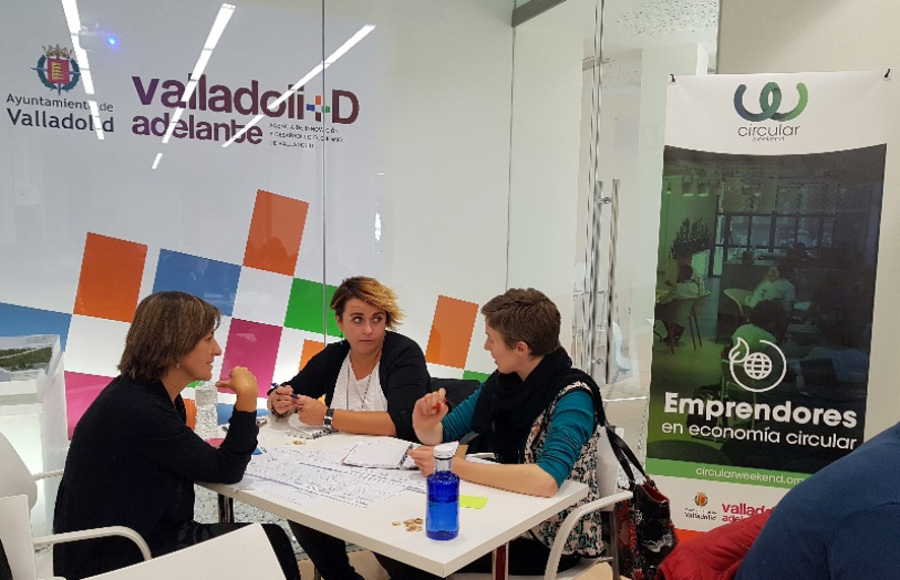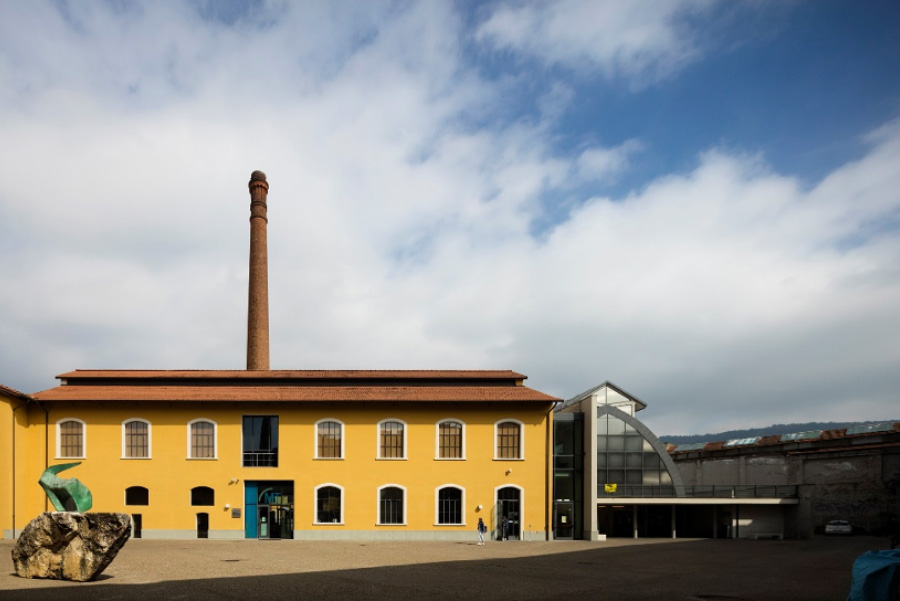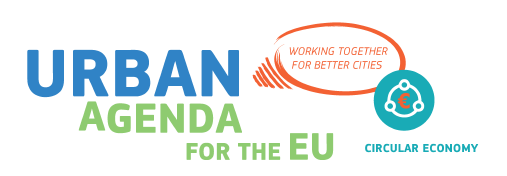Activist shareholder
A shareholder that uses an equity stake in a corporation to put pressure on its management to achieve certain goals.
Additive manufacturing
Industrial manufacturing process involving 3D printing
Anaerobic digestion
Breaking down biological material in an environment without oxygen. In this process, biogas is generated that can replace fossil energy sources in producing electricity, heat and fuel.
Angel investor
An affluent individual who provides capital for a business start-up, usually in exchange for convertible debt or ownership equity.
Asset manager / Asset owner
People and companies who manage assets on behalf of the owner. It may apply both to tangible assets (physical objects such as buildings or equipment) and to intangible assets (such as human capital or intellectual property).
B2B
This abbreviation stands for business-to-business, which refers to a business model in which the clients of the business are businesses, rather than consumers.
B2C
This abbreviation stands for business-to-consumer, which refers to a business model in which the main target audience of the business are consumers.
Bankruptcy
The legal proceeding involving a person or business that is unable to repay outstanding debts.
Benchmarking
The practice of comparing business processes and performance metrics with other companies. It is a way for organisations to learn from each other, to be accountable, and to facilitate supervision.
Bills of materials (BOM)
A list of raw materials, sub-assemblies, intermediate assemblies, sub-components and parts, together with the quantities of each needed to manufacture a specific end-product.
Bio-based material
A material that is partially or entirely made of biomass.
Bio-benign
A material that is harmless to natural systems in case it unintentionally escapes collection and recovery systems.
Biodegradable materials
A material which microorganisms can break down into natural elements (i.e. water, biomass, carbon, etc.).
Bioeconomy
The knowledge-based production and utilisation of biological resources, biological processes, and principles to sustainably provide goods and services across all economic sectors.
Biological nutrients
Organic materials derived from and developed to re-enter the natural environment.
Biomass
Organic materials derived from plants or animals.
Biomimicry
Taking inspiration from nature to solve human challenges.
Biosphere
The ecosystem comprising the entire earth and the living organisms that inhabit it.
Blockchain
A system in which a record of transactions (e.g. money, information, contractual agreements, cryptocurrency) are maintained across several computers that are linked in a peer-to-peer network.
Bond
A debt security, under which the issuer owes the holders a debt and is, in most cases, obliged to pay them interest or to repay the principal at a later date.
By-product
A material or substance created when processing or manufacturing something else.
Cascading
Extracting maximum value from a material through alternative uses across value streams.
Chain-of-custody
A system to document and verify the path taken by an eligible input material through all stages of transfer and production, to the final product.
Chemical recycling
A process to break down polymers into individual monomers or other chemical feedstock that can then be used as building blocks to produce polymers again.
Circular economy
An economic model where the use and life of materials, products and assets are extended and optimised, and resource extraction and waste generation are minimised.
Circularity gap
The share of the world economy that is linear, i.e. the share of material inputs that are not reused or recycled.
Closed-loop recycling
Recycling a product and manufacturing it into the same product again and again.
Compliance
Term used to indicate that a person or organisation works in accordance with applicable laws and regulations, and complies with standards.
Composting
Treatment process that decomposes organic matter in an oxygenated environment. The result is nutrient-rich fertilizer or soil amendment.
Cradle-to-Cradle
A design framework focused on ''eco-effectiveness'' and positive impact of the product while reducing its negative impacts.
Cradle-to-Gate
A life-cycle perspective that considers the environmental impacts of a product or process from raw material extraction up to manufacturing.
Cradle-to-Grave
A life-cycle perspective that considers the environmental impacts of a product or process from raw material extraction up to disposal.
Critical raw materials
Raw materials that are essential to the economy and have high supply risk due to limited quantities, suppliers, and access.
Crowdfunding
The practice of funding a project or venture by raising small amounts of money from a large number of people, typically via the internet.
Debt
A finance option at which the financier lends money to a project or company that must return the lending over a specified period.
Decoupling
Breaking the link between economic growth and natural resource consumption.
Dematerialisation
Delivering a product using a percentage or none of the mass compared to the conventional product.
Depletion time
The time remaining before a natural resource is completely extracted.
Depolymerisation
The process of converting polymers back into monomer(s) from which they have been produced.
Design for disassembly
Design principle that calls for the end-of-life options of how the product, components, and materials can be deconstructed.
Design for durability
Design principle that calls for maximisation of a product or service's useful life. Planned obsolescence directly contrasts this design principle.
Design for environment
Design principle that calls for the minimisation of negative environmental impacts across a product or service's life cycle.
Design for flexibility
Design principle (most commonly applied in building design and construction) that calls for use of interstitial space, programmed soft space, shell space, expansion capacity, demountable partitions, and mobile or modular furnishing.
Design for recyclability
Design principle that calls for the end-of-life accounting of how the product will be collected and recycled.
Design for repairability
Design principle that calls for products to be manufactured using materials, bonding and processes that allow them to be easily repaired.
Design for sustainability
Design principle that calls for the optimisation of environmental and societal benefits across a product or service's life cycle.
Digital material banks
Online marketplace for people to find and get the right materials they want.
Digitisation
Conversion of analogue or physical products to digital resources.
Disruptive innovation
An innovation that creates a new market and value networks and eventually disrupts an existing market and value network, displacing established market-leading firms, products, and alliances.
Dissipative product
A product that cannot be retrieved due to how it was dispersed during use (i.e. paint, fertilizer).
Downcycling
Use of secondary materials that results in a lower economic value of that material that cannot be recovered.
Due diligence
The investigation or exercise of care that a reasonable business or person is expected to take before entering into an agreement or contract with another party, or an act with a certain standard of care.
Durability
Product characteristic that determines the length of time over which it maintains its value or functionality.
Eco-design
Design principle that calls for the minimisation of negative environmental and health impacts across a product or service's life cycle.
Eco-efficiency
The economic value of a product or service compared to its natural capital costs.
Electronic waste (E-waste)
Disposed electronic and electrical products. These products typically contain hazardous materials and require certified handling and recycling.
Embedded impacts
The environmental and social impacts of a product, from material extraction up to the use phase.
End-of-life
The life cycle stage during which a product no longer has value to its original owner and is then disposed of.
Environmental depletion
The destruction of the environment by over-using or depleting resources.
Environmental, social and governance (ESG) criteria
Refers to the three central factors in measuring the sustainability and ethical impact of an investment in a company or business. These criteria help to better determine the future financial performance of companies.
Equity
The financier invests in a project or company through buying shares and earns returns from dividends or from selling the shares at increased value.
Extended producer responsibility (EPR)
A policy in which financial or physical liability for end-of-life handling is placed on the producer.
Extension of liability
To enlarge the scope of a legal obligation or to make the legal obligation more comprehensive.
Feedstock
A material or substance that is used as an input to a product or process.
Fiduciary
A person or organisation that acts on behalf of another person or persons to manage assets based on trust.
Fintech
Financial technology and innovation that aims to compete with traditional financial methods in the delivery of financial services. It is an emerging industry that uses technology to improve activities in finance.
Fixed income
Any type of investment under which the borrower or issuer is obliged to make payments of a fixed amount on a fixed schedule.
Food system
Encompasses the full value chain of producing food for human consumption: growing, harvesting, processing, packaging, transporting, marketing, consumption, and disposal of food and food-related items.
Footprint
The impact of a product or service across its life cycle. For example, one can calculate a product's carbon, water, energy, and material footprint. This is similar to a life-cycle assessment (LCA) except that footprints typically only evaluate one environmental issue.
Fragmentation
The process through which plastics break into pieces over time. A plastic can fragment into microplastic pieces while not being biodegradable.
Funding
The act of providing financial resources, usually in the form of money, or other values such as effort or time, to finance a programme or project. While ‘funding’ usually refers to grant and subsidy types of financial support, in this guide, it also covers different types and sources of financing, such as debt, equity, and guarantees.
Gasification
A process that converts carbonaceous organic or fossil fuel-based materials into carbon dioxide, hydrogen and carbon monoxide under high temperatures and minimal oxygen.
Geo-spatial information
The information that identifies the geographic location of features and boundaries on earth.
GHG-based
GHG stands for greenhouse gas and a GHG-based material is partly or entirely produced from greenhouse gases such as carbon dioxide or methane.
Green chemistry
Designing chemical products and processes that minimise or eliminate hazardous substances.
Green engineering
Designing products and processes to minimise environmental impacts and protect human health without compromising economic value.
Green public procurement
A policy in which governments commit to buying products and services with environmentally-preferable characteristics.
Greenhouse gas (GHG)
Any gaseous compound that is capable of absorbing infrared radiation. By trapping and holding heat in the atmosphere, greenhouse gases are responsible for the greenhouse effect, which ultimately leads to climate change.
Hazardous materials
A material or substance that has the potential to harm humans, animals or the environment.
Hedge fund
An investment fund that pools capital from accredited investors or institutional investors and invests in a variety of assets, often with complicated portfolio-constructions and risk management techniques.
High-end items
An item that is expensive or of outstanding quality.
Horizontal recycling
Material recycling that allows for reuse in a comparable function.
Hydrogenation
A chemical reaction using hydrogen, pressure, heat, and usually a catalyst to reduce or saturate organic compounds.
Impact analysis
The second phase of a life-cycle assessment (LCA) in which environmental impacts are determined.
Index
The weighted value of a set of securities that is structured to represent a specific part of the market.
Index fund / index tracker
A mutual fund or exchange-traded fund designed to follow certain pre-set rules so that the fund can track a specified basket of underlying investments.
Industrial ecology
The study of material, energy, and water flows through an industrial system and their effect on the environment, economy, and society.
Industrial metabolism
The physical and chemical processes taking place in an industrial system.
Industrial symbiosis
The mutually beneficial exchange of waste and by-products between three or more parties.
Informal recycling sector
Small businesses and self-employed persons providing material recycling services with little or no legal recognition and low capital investments.
Institutional investor
A large organisation that has considerable cash reserves with which to invest in securities and other investment asset. Examples of institutional investors are pension funds and assurance companies.
Integrated design
Design approach that convenes different disciplines across the value chain, building on diverse viewpoints early in the process.
Integrated reporting
A process that results in communication about value creation over time.
Integrated waste management
Managing solid waste from the point of consumer disposal through collection, sorting, reuse, and recycling.
Interest subsidy
The value of the tax deductions of an individual's or company's earnings resulting from interest payments on its debt over the course of a year.
Inventory analysis
The first stage of a life-cycle assessment (LCA) in which the inputs and outputs (materials, energy, water, economic value, etc.) of the system are identified.
Just-in-time manufacturing
Manufacturing strategy to reduce wasted time and resources by providing products or services as they are needed for the next step in the production process.
Landfill disposal
The disposal of solid waste of solid waste in landfills.
Large-cap
A company with a market capitalisation (value) of more than 10 billion dollar (EUR 8.9 billion). The market capitalisation is calculated by multiplying the number of a company's shares outstanding by its stock price per share.
Leakage
Materials that do not follow an intended pathway and 'escape' or are lost in the system.
Lean manufacturing
A manufacturing strategy that aims at optimising processes and operations by eliminating all forms of waste (i.e. time, money, resources).
Leasing
A service model in which the customer pays for continuous access to a product over an agreed period of time.
Leverage
Any technique involving the use of debt rather than equity in the purchase of an asset, with the expectation that the after-tax profit to equity holders from the transaction will exceed the borrowing cost. It enables gains but also losses to be multiplied.
Liability
An obligation to, or something that you owe somebody else. They are defined as a company's legal financial debts or obligations that arise during the course of business operations.
Life cycle
All of the stages that a product goes through in its lifetime: raw material extraction, processing, manufacturing, use, end-of-life and transportation.
Life cycle assessment (LCA)
A method to evaluate the environmental impacts of a product or system over its life cycle. An LCA is typically done in three parts: (1) Inventory Analysis, (2) Impact Assessment, (3) Improvement Analysis.
Life cycle cost (LCC)
A method to evaluate the financial impacts of a product or system over its life cycle.
Life cycle management
The integration of life cycle thinking into decision-making.
Lifetime extension
The strategy of incorporating product characteristics that extend the time period in which that product continues to serve its originally intended function. It is the counterpart of the planned obsolescence strategy.
Light-weighting
Design and manufacturing processes that reduce product mass.
Linear economy
Economic model in which raw materials are mined to make a product, which becomes waste after its use. This is also referred to as the "take-make-dispose" economic model.
Linear risk
The risk a company faces when depending on the conventional ''take-make-dispose'' economic model.
Liquidity
The degree to which an asset or security can be quickly bought or sold in the market at a price reflecting its intrinsic value, the ease of converting it to cash.
Living labs
Open innovation ecosystems based on a systematic user co-creation approach that integrates public and private research and innovation activities in communities, placing citizens at the centre of innovation.
Local materials
Materials that are extracted and processed within the same region they are being purchased. Specific distances depend on the material, process, and objectives.
Lock-in
A situation in which an established design or manufacturing process discourages innovation.
Match-funding
The stipulation set by a grant-providing body that the recipients of a grant raise a certain percentage of the money they require, generally a sum more or less equal to that of the sum of money being granted.
Material flow
The quantity and rate at which materials move through a system (i.e. city, company, etc.).
Material flow analysis (MFA)
A method to evaluate the material flows into and out of a system.
Mechanical recycling
Operations that recover after-use materials via mechanical processes (grinding, washing, separating, drying, re-granulating, compounding), without significantly changing the chemical structure of the material.
Metabolic analysis
A study of the physical and chemical processes within an industrial system.
Mezzanine
The hybrid of debt and equity financing that gives the lender the right to convert to an equity interest in the company in case of default.
Microfibers
Very fine synthetic yarns.
Mid-caps
Companies with a market capitalisation (value) between 2 and 10 billion dollar (EUR 1.8 and 8.9 billion). They fall between large-cap and small-cap, but the classifications are approximations and may change over time.
Mineral
An inorganic physical material with a specific chemical make-up.
Misconsumption
Consumption that is not in the best interest of the consumer.
Modular design
Design principle that calls for products to be manufactured using a set of components that can be individually replaced, preventing entire products from becoming useless.
Monomer
A molecule that can undergo polymerisation, thereby contributing to the essential structure of a macromolecule. A large numbers of monomers combined form polymers.
Municipal Solid Waste (MSW)
Solid waste that is generated by households, and waste of similar characteristics from other waste generators.
Natural capital
The stock of renewable and non-renewable resources (e.g. plants, animals, air, water, soils, minerals) that combine to yield a flow of benefits to people.
Niche
Denoting or relating to products, services, or interests that appeal to a small, specialised section of the population.
Non-governmental organisations (NGOs)
Non-profit organisation, independent of government. Many are active in humanitarian and nature areas, although they can also serve as lobby groups for corporations.
Nutrient cycle
The processes that enable the movement of organic and inorganic compounds back into the production of living matter.
Open loop recycling
Recycling product A and re-manufacturing it into product B.
Packaging (primary)
Packaging in contact with the product (e.g. a plastic sack holding cereal).
Packaging (secondary)
Packaging that contains one or more primary packages (e.g. cereal boxes).
Packaging (tertiary)
Packaging that contains one or more secondary packages (e.g. a plastic wrap for a palette of cereal boxes).
Pay for performance
Service model in which payment is tied to the quantity or quality of service the customer receives.
Planetary boundaries
The environmental limits within which humans can safely live.
Planned obsolescence
Business strategy to shorten the consumer's ownership period in order to increase sales volume. This is accomplished through poor quality manufacturing, an accelerated product succession timeline, or compelling marketing campaigns.
Polymer
Natural or synthetic macro-molecules composed of many repeated sub-units (monomers) bonded together. Plastics are typically organic polymers.
Prefabrication
Practice of manufacturing building components and assemblies in a factory and transporting the product to the construction site for installation.
Private equity
Stock in a privately held company.
Product-as-service
A business model that allows customers to using a product against payment without purchasing the product.
Profit
A financial gain. More specific; the difference between the amount earned and the amount spent in buying, operating, or producing something.
Public procurement
The acquisition of works, supplies, and services by public bodies under transparent, fair and competitive procedures.
R&D projects
Research and development projects referring to innovative activities in developing new services or products, or improving existing services or products.
Rare earth materials
A group of 17 metals that are economically difficult to extract due to low concentrations in nature.
Raw materials
Crude or virgin materials that are used in product manufacturing or processing.
Rebound effect
The effect that due to behavioural or systemic responses, the net gains in energy or resource efficiency relating to a certain innovation are lower than the actual gains directly coming from that innovation.
Recovery
Process of extracting material, energy or water from the waste stream for reuse or recycling.
Recyclable materials
Materials that can be recycled.
Recyclables
Wasted material intended for recycling in manufacturing, also known as secondary raw materials.
Recycled content
The portion of a product that is made from recovered and recycled materials.
Recycling
The collection, sorting, and processing of disposed materials for use in another manufacturing process.
Refurbished materials
Discarded materials or products that are topically repaired, refinished, and sanitised to serve their original function.
Regenerative design
A design principle that calls for products or services to contribute to the ecosystem's health.
Regenerative economy
A scenario in which products and services replenish their own sources of energy, water, and materials in a closed-loop system.
Remanufacturing
Process of recovery, disassembly, repair, and sanitising components or parts for resale and reuse.
Renewable resources
Resources that replenish themselves after human extraction within a finite amount of time.
Repair café
A meeting in which people repair household electrical and mechanical devices, computers, clothing, etc.
Repurpose
To adapt a product or service to serve a different purpose.
Resource banks
A source of economic wealth, especially of a country (mineral, land, labour, etc.) or business enterprise (capital, equipment, personnel, etc.).
Resource efficiency
The percentage of the total resources consumed that make up the final product or service.
Resource productivity
The economic value created per unit of resource.
Resource value optimisation
Maximising the economic value that is created per unit of resource, over multiple lifetimes.
Reuse
Using a product or material again, for the same or an alternative function.
Reverse logistics
Process of collecting and aggregating products, components or materials at the end-of-life for reuse, recycling, and returns.
Revolving fund
A fund or account that offers loans under the condition that they are being replaced so that the full amount becomes available again.
Secondary materials marketplace
Store that facilitates the exchange of secondary raw materials.
Secondary raw materials
Waste materials that are recovered, recycled, and reprocessed for use as raw material.
Securities
A tradable financial asset.
Shareholder value (SV)
The part of a business' capitalisation that is equity as opposed to long-term debt. In the case of only one type of stock, this would roughly be the number of outstanding shares times current share price.
Shares
Units of ownership interest in a corporation or financial asset that allow for an equal distribution in any profits in the form of dividend.
Sharing model
Business model based on the sharing of under-used assets as a service.
Small and medium-sized enterprises (SMEs)
Businesses whose personnel numbers fall below certain limits. They outnumber large companies by a wide margin.
Social equity
The principle that each member of society has a right to be given fair and equitable provision, implementation, and impact of services, programs, and polices by the political system.
Social life cycle assessment
A method to assess the social and sociological impacts of a product or service across its entire life cycle.
Special purpose vehicles/entities (SPV/SPE)
A subsidiary created by a parent company to isolate financial risk. Its legal status as a separate company makes its obligations secure even if the parent company goes bankrupt.
Standardisation
Establishing uniformity across manufacturing processes to minimise errors and save costs.
Start-up
A company or project initiated by an entrepreneur to seek, effectively develop, and validate a scalable business model.
Stock (reservoir)
The total volume or mass of material in a system (i.e. industrial, municipal, organisational, etc.).
Subsidy
A direct or indirect payment to individuals or firms, usually in the form of a cash payment from the government or a targeted tax cut.
Substances of concern
Chemical elements and their compounds that may have serious and often irreversible effects on the environment or on human health.
Supply loops
Forward and reverse logistics that are set up to facilitate material/product flows through a system from input, production, finished goods, and end-of-use products back to raw materials. Together with intermediate steps, this should prolong the product life cycle.
Sustainability watcher
An analyst that ensures that funds are abiding to the ESG-criteria.
Sustainable consumption
The use of goods and services that address the requirements of today's population without compromising the needs of future generations to meet theirs.
Sustainable Development Goals (SDGs)
A collection of global goals set by the United Nations General Assembly in 2015 for the year 2030.
Sustainable materials management
Management approach that calls for the reduction of environmental impacts without compromising economic productivity or social equity.
Sustainably sourced bio-materials
Bio-based products from suppliers that minimise environmental impacts and protect and enhance nature and biodiversity. For example, FSC or PEFC certified paper.
Systems thinking
An approach that accounts for the interdependence and evolution of system elements.
Take-back program
An initiative to collect used products or materials from consumers and reintroduce them to the original processing and manufacturing cycle.
Tendering process
The process of procuring goods, services or works, in which different organisations can apply for the supplier selection process through filling out tender documents.
Thrift shop
A shop selling second-hand clothes and household goods.
Upcycle
The use of secondary products, components or materials in a different way resulting in higher economic value than it had before.
Urban farming
The practice of cultivating, processing, and distributing food in or around urban areas.
Urban metabolism
A model to facilitate the description and analysis of the flows of the materials and energy within a city.
Urban mining
Process of extracting useful materials from city waste stocks.
Value chain
The set of processes or activities needed to create a value containing product or service, including production, marketing, and the provision of after-sales service.
Value creation
The performance of actions that increase the worth of goods, services or even a business.
Value recovery
The value of an asset that can be recovered in the event of liquidation or winding down.
Venture capital
A type of private equity that is provided by firms or funds to small, early-stage, emerging firms that are deemed to have high growth potential or have demonstrated high growth.
Virgin materials
A basic material that has never been previously used, developed, or processed.
Waste Electrical and Electronic Equipment (WEEE)
Disposed electronic and electrical products. These products typically contain hazardous materials and require certified handling and recycling.
Waste hierarchy
The priority order available for managing waste, ranked in descending order of preference, based on the best environmental outcome across the lifecycle of the material: (1) Prevention, (2) Reduce, (3) Reuse, (4) Recycle, (5) Incineration, (6) Landfill.
Waste to energy
A process of treating waste that creates energy in the form of electricity, heat or fuel.
Wastewater
Spent or used water that contains dissolved or suspended solids.
Zero waste
Programme to divert all (at least 95%) waste from landfill. Ideally, this also excludes incineration.






